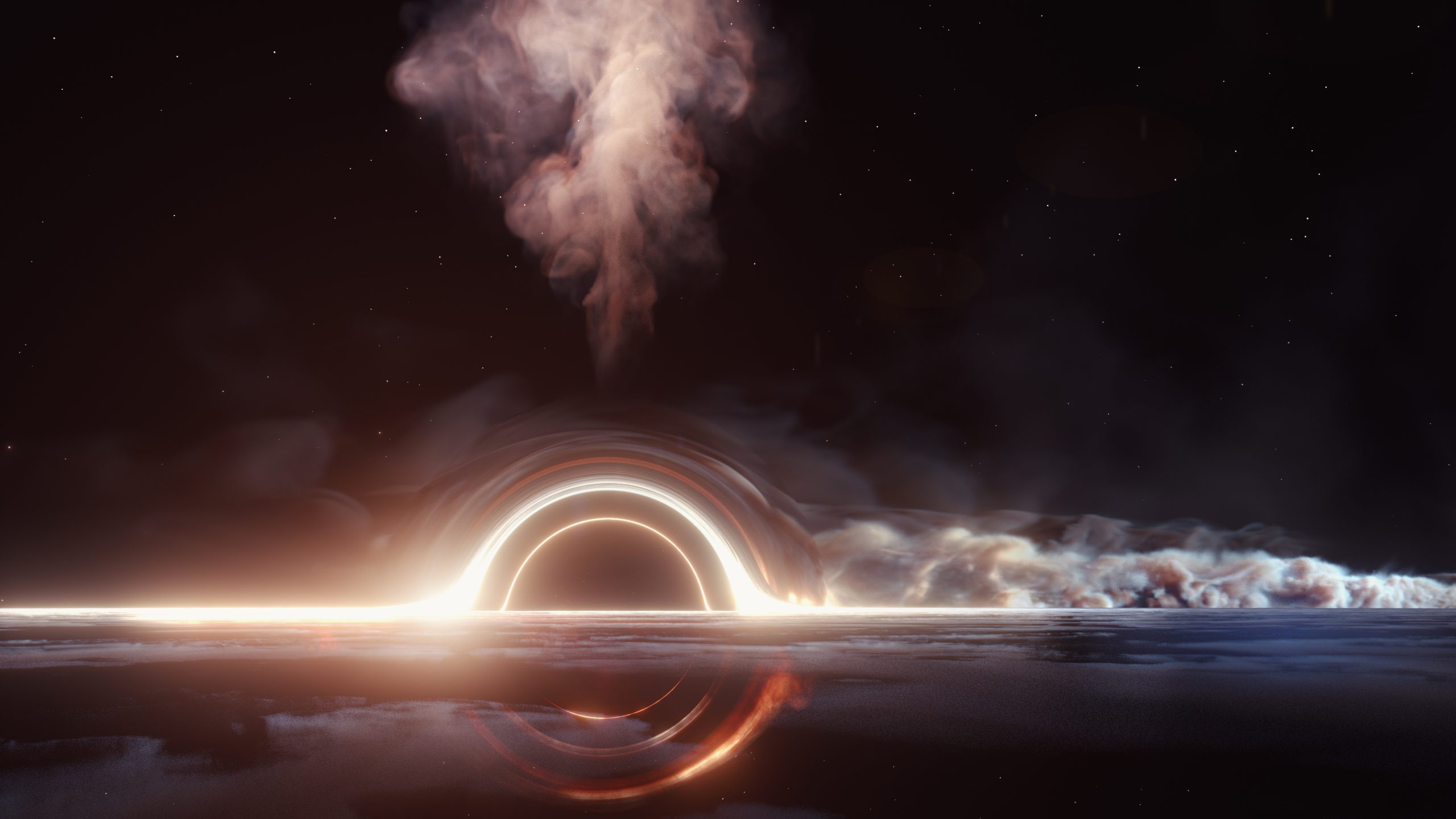When a star rips apart …
… a muon deep under the ice of Antarctica creates a trace in a gigantic detector. The muon was created because a high-energy neutrino interacted with an atom in the detector. The neutrino began its journey about 700 million years ago, around the time the first animals evolved on Earth. That’s the travel time it took for the particle to get from the distant, unnamed galaxy (cataloged as 2MASX J20570298+1412165) in the constellation of The Dolphin to Earth. It occurred as a result of “AT2019dsg.” This is what astronomers call an event in which a star was ripped apart by a black hole.
But not by just any black hole. Scientists estimate that the giant black hole is as heavy as 30 million suns. “Gravity gets stronger the closer something gets to the object. This means that the black hole’s gravity pulls the near side of the star more strongly than the far side of the star, leading to a stretching effect,” explains Robert Stein of DESY in Hamburg, Germany, who wrote a paper about it with colleagues. “This difference is called the tidal force. The closer the star gets, the more extreme this stretching becomes. Eventually it tears the star apart, and then we talk about tidal disruption. It’s the same process that leads to tides on Earth, but fortunately for us, the moon doesn’t pull hard enough to tear the Earth apart.”
About half of the stellar debris was ejected into space in the process, leaving the other half in the form of a disk swirling around the black hole. This “accretion disk” is roughly comparable to the swirl of water over the drain of a bathtub. Before even the matter of the accretion disk falls into the hole, it becomes hotter and hotter and glows brightly. This glow was first detected on April 9, 2019, by the Zwicky Transient Facility (ZTF) – a robotic camera at Caltech’s Palomar Observatory in Southern California.
Six months later, on Oct. 1, 2019, the IceCube neutrino detector at the South Pole registered an extremely energetic neutrino from the direction of the tidal disturbance event. “It hit the Antarctic ice with a remarkable energy of more than 100 teraelectronvolts,” said co-author Anna Franckowiak of DESY, who is now a professor at Bochum University. “By comparison, that’s at least 10 times the maximum particle energy that can be achieved in the world’s most powerful particle accelerator, the Large Hadron Collider at the European particle physics laboratory CERN near Geneva.”
AT2019dsg is thus an extremely powerful cosmic particle accelerator. It has, after all, shot many, many more of these neutrinos into space.

